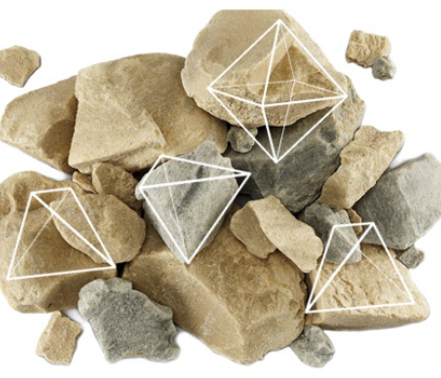- Understanding the Role of Geomembrane Liners in Waste Management
- Innovations in Geomembrane Liners for Water Management
- Geomembrane Liners: A Comprehensive Guide
- The Future of Geomembrane Liners in Civil Engineering
- Geomembrane Liners: Enhancing Landfill Stability
Manager:
WhatsApp:+86 177 0135 2670
Tel:+86 177 0135 2670
Email:marketing@okorder.com
Address:3rd Floor, No.2 Building, No.1 Sanlihe Road
How do you apply bentonite?
Bentonite blankets are recognized as powerful tools in various engineering and environmental applications. Their ability to create an impermeable barrier makes them highly valuable in seepage prevention, groundwater control, and mitigation of contamination risks. However, the correct way of application is necessary for the best performance. This comprehensive guide will cover all aspects of applying bentonite blankets from preparation to installation techniques.

Understanding Bentonite Blankets
Before going any further into the process of application, it is vital first to understand basica about bentonite blankers . The blankets consist of a sandwiched sodium bentonite clay layer between two geotextile fabrics. Bentonite is a naturally occurring clay mineral that can swell remarkably when moistened. When in contact with water this special construction enables it to form a tight, impenetrable seal thereby preventing leaks and fluid passage.
Preparation for Application
1. Site Evaluation: Conduct thorough site evaluation where the blanket will be installed. Identify possible sources of water, soil composition and existing structures.
2. Surface Preparation: Clear away debris, vegetation or sharp objects that could puncture the geotextile fabric from the surface. The area should be made smooth and even so that there are no irregularities before placing bentonite blanket correctly.
3. Moisture Content: Soil moisture content must be checked for compliance with bending specifications before pouring water on top of ground already covered by blanket Ensure adequate hydration through sufficient moisture contents which activate swelling properties inside this type of clay resulting in a tight seal.
4. Quality Control: Evaluate quality control checks aimed at verifying integrity and suitability of specified standards with regard to bentonite blankets Examine geotextile fabric for faults like tears or defects which may hinder reliable functioning of barrier.
Installation Techniques
1. Unrolling the Blanket: Start unrolling along the prepared surface, ensuring that the geotextile fabric stays on top. During unrolling procedure, be cautious not to stretch or wrinkle the fabric as this may affect the barrier’s integrity.
2. Overlap and Seam Sealing: Cover all spaces with neighboring rolls of bentonite blankets by a certain distance in order to maintain full coverage without gaps. Use an appropriate seaming technique like heat welding or adhesive bonding to create firm seams that will prevent water penetration through the edges.
3. Anchor and Securement: Put the bentonite blanket at its exact place using any method which will prevent displacement or uplift during installation Stakes, weights or mechanical fasteners can be used to reinforce corners and edges of blanket.
4. Hydration and Swelling: When you have installed your blanket correctly for instance moisture content is good then initiation of a hydration process has to be done equally across blanketed surface just by sprinkling water Monitor how it swells uniformly towards soil below when it comes into contact with water thereby tightly sealing itself against underlying ground.
Post-Installation Considerations
1. Inspection and Maintenance: Inspect installed bentonite blankets regularly for possible damages, erosion and compromised integrity Take care of such issues promptly; otherwise leakage or failure of bather system may occur Establish regular maintenance regime starting from installation up till end-of-life so as to ensure constant performance and long useful life for such blankets.”
2. Regulation and Monitoring: At all times, we should test the hydraulic performance of our bentonite blanket by periodically evaluating its effectiveness. It will be important that barrier integrity is evaluated using permeability testing or groundwater monitoring to detect any possible leakages or seepage.
3. Meeting Environmental Standards for usage of Bentonite Blankets: Always research environmental requirements and restrictions concerning the use of bentonite blankets particularly in sensitive areas where the land is protected. If measures are not put in place properly to control erosion or sedimentation then surrounding ecosystems might suffer.
4. Decommissioning: When a service life of a bentonite blanket comes to an end or when it is no longer needed, it must be removed in accordance with established procedures for decommissioning too. For such materials that are disposed off according to prevailing laws on environmental best practices, potential risks may be mitigated.

Conclusion
In conclusion, proper application of bentonite blankets requires understanding their properties and characteristics so that you can exploit them fully in engineering and environmental projects. The creation of strong and reliable barriers against water seepage and pollution can be done by grasping the qualities of this material like preparing site adequately before installation phases plus implementing correct installation techniques.” Additionally, maintaining these systems require being proactive with regard to inspections, repairs as well as adherence with the necessary regulatory policies thus enabling sustainability through proper performance management spanning over long periods.” Planning well throughout your project’s lifecycle makes it possible for bentonite blankets to remain as viable eco-friendly options across various geotechnical contexts."
-
2024-05-15How long does bentonite waterproofing last?
-
2024-05-15What is bentonite used for?
-
2024-05-15What happens when bentonite gets wet?
-
2024-05-15Does bentonite go bad?






